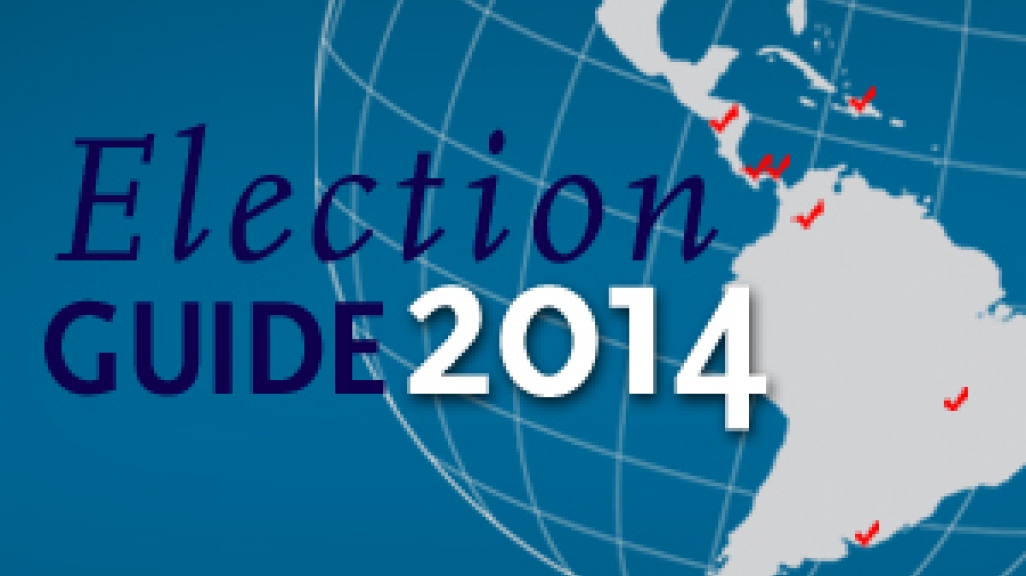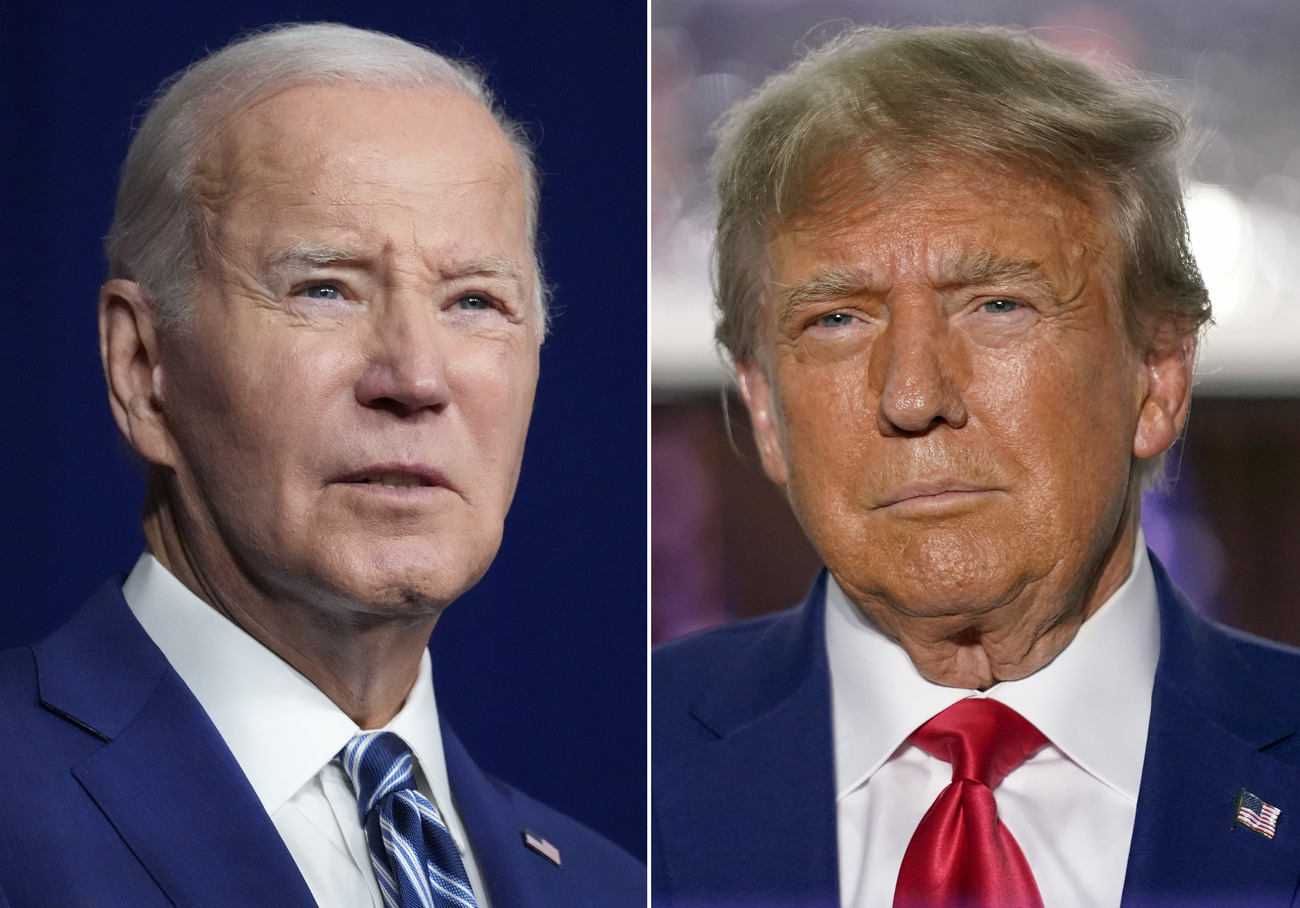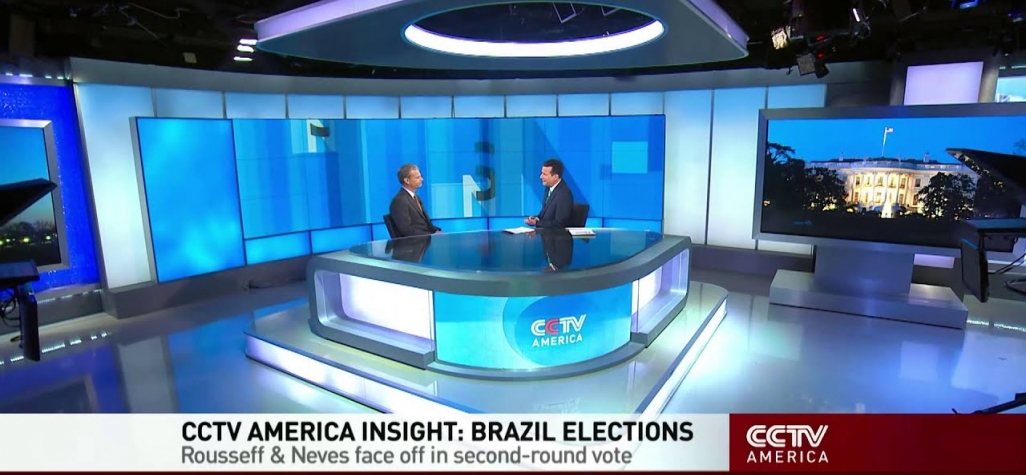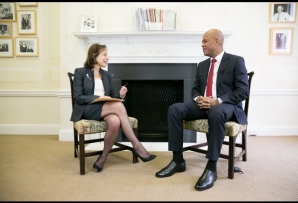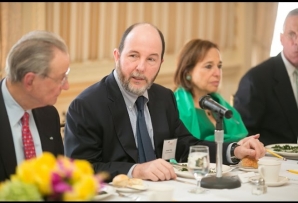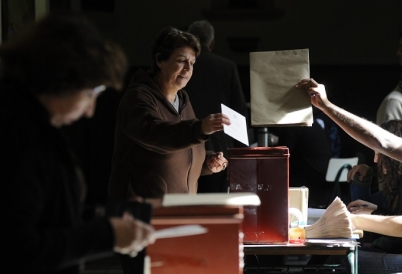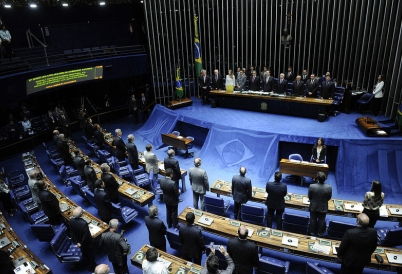Guide: 2014 Elections in the Americas
Guide: 2014 Elections in the Americas
Eight countries in the Western Hemisphere will hold national-level elections in 2014:
|
Collectively, these countries represent around 60 percent of the population of the Western Hemisphere. Voters will elect seven presidents and 1,699 legislators in total. AS/COA Online presents an overview of the region’s federal elections in 2014, along with the latest analysis, results, multimedia, and expert perspectives.

Costa Rica
Type: Presidential and Legislative
First Round: February 2, 2014
Runoff: April 6, 2014. A second round is held if a candidate fails to win more than 40 percent of votes during the first round. During the second round, the victor wins by a majority.
Inauguration: May 8, 2014
Number of Seats: In addition to the president, 57 members of Costa Rica’s unicameral Legislative Assembly will be elected for four-year terms. Reelection is allowed, but consecutive terms are not.
Terms: Presidents serve four-year terms and can be reelected, but cannot serve consecutive terms.
El Salvador
Type: Presidential
First Round: February 2, 2014
Runoff: March 9, 2014. If none of the candidates achieve an absolute majority (50 percent of the vote plus one), a second election is conducted no later than 30 days later. The candidate who garners the most votes wins the second round.
Inauguration: June 1, 2014
Terms: Presidents are elected for five-year terms without the possibility of consecutive re-election.
Colombia
Type: Legislative
Election Day: March 9, 2014
Number of Seats: The Senate holds 102 seats while the Chamber of Deputies houses 166. All seats are up for grabs each election cycle.
Start of Legislative Session: Elected officials will take office on July 20.
Terms: Colombia’s senators and representatives can serve an unlimited number of four-year terms.
Panama
Type: Presidential and Legislative
Election: May 4, 2014
Presidential Election: There is only one round of voting in the presidential election. The candidate who receives a plurality of votes takes office. Presidents are elected for five-year terms and must wait two terms to be eligible for reelection.
Inauguration: July 1, 2014
Number of Seats: 71 representatives in Panama’s unicameral Legislative Assembly will be elected for five-year terms, along with the president.
Terms: Presidents are elected for five-year terms and must wait two terms to be eligible for reelection. There are no term limits for National Assembly members.
Colombia
Type: Presidential
First Round: May 25, 2014
Runoff: June 15, 2014. A second round is held if a candidate fails to win more than 50 percent of votes during the first round. During the second round, the victor wins by majority.
Inauguration: August 7, 2014.
Terms: Presidents serve four-year terms, with the possibility of consecutive reelection.
Brazil
Type: Presidential and Legislative
First Round: October 5, 2014
Runoff: October 26, 2014. A runoff takes place if a candidate fails to receive more than 50 percent of the vote. The winning candidate in the second round must win an absolute majority.
Inauguration: The president takes office on January 1, 2015. The new legislative session starts on February 1, 2015.
Number of Seats: There are 513 seats in the Chamber of Deputies and 81 spots in the Senate. Deputies serve four-year terms, and all seats are up for a vote in 2014. Senators serve eight-year terms; a third of seats are up for a vote in 2014.
Terms: Presidents serve four-year terms with the possibility of consecutive reelection.
Bolivia
Type: Presidential and Legislative
First Round: October 12, 2014
Runoff: December 7, 2014. A runoff takes place if a candidate fails to win more than 50 percent of the vote, or 40 percent of the vote with a 10 percent lead over the second-place candidate. In a runoff, the candidate who gains the majority of the vote wins.
Inauguration: The president and legislators take office on January 22, 2015.
Number of Seats: The Chamber of Deputies will fill all 130 seats for five-year terms, and the Senate will elect all 36 members for five-year terms. Members of Congress are eligible for one consecutive reelection.
Terms: Presidents are permitted one consecutive reelection. However, in May 2013 a law was passed allowing President Evo Morales to run for reelection a second time.
Uruguay
Type: Presidential and Legislative
First Round: October 26, 2014
Runoff: November 30, 2014. A runoff is held on the last Sunday of November of the same year if no candidate garners an absolute majority in the first round.
Inauguration: March 1, 2015
Number of Seats: In Uruguay’s bicameral National Legislature, 30 senators and 99 representatives will be elected for five-year terms. There are no term limits for either the upper or lower houses. Also, the vice president serves as an ex officio member of the Senate, bringing to total number of senators to 31.
Terms: Presidents are elected for five-year terms, and may be re-elected but not for consecutive terms.
United States
Type: Legislative
Election Day: November 4, 2014
Number of Seats: All 435 seats are up for election in the House of Representatives, as well as 33 of the 100 Senate seats.
Start of Legislative Session: Newly elected legislators will take office on January 3, 2015.
Terms: Representatives are elected to two-year terms, with all seats up for grabs each election cycle. Senators, on the other hand, serve six-year terms with one-third of Senate seats up for renewal every two years. There are no congressional term limits in the U.S. Congress.
Editor's note: This guide originally incorrectly stated that seven countries in the Americas will hold elections in the 2014. As of the start of 2014, the number of countries with national elections planned is eight, with seven presidents and 1,699 legislators to be elected across these countries. This guide also incorrectly stated that Panama's presidential inauguration is September 1; the correct date is July 1. This guide was updated on May 2 to reflect Bolivia's exact election dates, announced on April 30.
2014 Election Guide Blog
AS/COA Online looks at the latest poll numbers, the leading presidential candidates, and election issues in the countries in the Americas holding federal-level elections in 2014.
2014 Election Blog: What Role Will Latino Voters Play in U.S. Midterm Elections?
Despite growing political clout, Hispanics make up a small percentage of voters in competitive congressional races this year.
With a population of roughly 54 million, Latinos constitute the United States' largest minority group and have become increasingly important as a political force. In 2012, President Barack Obama captured 71 percent of the Latino vote, and high levels of support among Hispanics helped him win key battleground states like Colorado, Florida, and Nevada. But given a number of factors—including voter concentration and turnout—this constituency may not make a large impact during the November 4 legislative elections.
Currently, there are 24.8 million eligible Latino voters in the United States. But Pew Research Center's Hispanic Trends Project estimates the Latino electorate will double in size by 2030, and will account for 40 percent of growth in the national electorate over the next two decades. But the Latino voter's influence at the national level may be limited due to voter concentration in a small number of states and congressional districts. Around 55 percent of Latino voters live in just three states: California, New York, and Texas. Additionally, in 2012, two-thirds of eligible Latino voters lived in what were considered non-battleground states.
This year, party control over the House and Senate will come down to races in states and congressional districts where Latinos do not represent a large percentage of the electorate. Although Latinos represent 10.7 percent of all eligible voters in the United States, according to Pew Research, they make up less than five percent of eligible voters in the eight states with close Senate races considered toss-ups. The exception is Colorado, where Latinos make up 14.2 percent of eligible voters in the state's highly contested race.
The concentration of Latino voters in a small number of House districts—half of all Latino voters live in just 65 of the country's 435 districts—will limit the influence of Latinos on House races, writes The New York Times' the Upshot. Latinos comprise a significant percentage of the electorate in only a handful of this year’s competitive House races, mostly in the West. Democrats in these races could benefit from Latino votes, but only if turnout is high.
However, Obama's September 6 decision to delay executive action on immigration until after the elections could mean some Latinos stay home in November altogether. In June, pollster Latino Decisions asked registered Latino voters how they would react if the president delayed executive action, and 54 percent responded they would be less enthusiastic about voting in November. Plus, 57 percent said they would be less enthusiastic about voting for a Democratic candidate should the president fail to act. “There's always the possibility that in a few key places where there are substantial…Hispanic voters, you might get a stay-at-home effect this time around,” said Roberto Suro, director of Tomas Rivera Policy Institute, which studies demographic diversity issues.
The lack of voter participation presents a challenge, given that turnout among Latino voters already tends to be low compared to other demographic groups. A May 2013 U.S. Census Bureau report found that voter turnout among Latinos in the 2012 presidential election stood at 48 percent, compared to 64.1 percent of eligible white voters and 66.2 percent of eligible black voters. For midterms, the number is lower. During the last legislative election in 2010, only 31 percent of eligible Hispanic voters cast their ballot.
2014 Election Blog: Immigration Emerges as Key U.S. Voter Issue
Recent polls show immigration is a concern among Americans ahead of the November 4 midterm elections.
Ahead of the United States’ legislative elections on November 4, immigration stands as one of the top issues of concern among Americans, according to Gallup. In a July survey on the United States’ most important problem, immigration ranked first at 17 percent—its highest level since 2006, when it peaked at 19 percent. Although immigration fell to the second position in the same Gallup poll in August, the survey’s 4 percentage-point margin of error means immigration holds a statistical tie with government dissatisfaction. The August survey found that Republicans were twice as likely as Democrats to view immigration as the most important problem for the country. Americans over 50 are also more likely to name immigration as the top issue. Regionally, concern about immigration is highest in the West.
This summer, the surge in unaccompanied child migrants at the U.S.-Mexico border reignited discussion on immigration policy and border security. With the migrant crisis in the spotlight during this period, the July Gallup poll showed a 12 percentage-point hike from June, when 5 percent of respondents said immigration was their top concern. In January, immigration was the top concern for just 3 percent of those surveyed. A July Associated Press/GFK poll found similar results: 62 percent of Americans considered immigration a “very” or “extremely important” issue, up from 52 percent in March.
Despite more attention on the issue, the approaching midterms may delay legislative action on immigration. In June, President Barack Obama said he would be willing to take executive action to institute immigration reform before the end of the summer, claiming he would do “what Congress refuses to do.” However, the president is now weighing postponing executive action until after the midterms, reports The New York Times. An August Fox News survey found that 65 percent of those polled prefer Congress pass a law to create a pathway to citizenship for undocumented immigrants this year, compared to 20 percent who prefer legislators do nothing.
Poll Update: Brazil's President Faces Narrower Margin as Silva Gains Momentum
After taking over for her party in the wake of Eduardo Campos’ death, Marina Silva moved into second place in the polls.
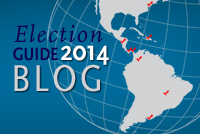 A little more than a month remains before Brazil’s October 5 presidential vote, when President Dilma Rousseff will seek a second term against increasing competition. She faces two main contenders: former Environment Minister Marina Silva and Senator Aécio Neves. Silva, originally a vice presidential pick, took over her party’s candidacy after candidate Eduardo Campos died in a plane crash in mid-August. The third-place candidate during the 2010 presidential election, Silva is now gaining in the polls.
A little more than a month remains before Brazil’s October 5 presidential vote, when President Dilma Rousseff will seek a second term against increasing competition. She faces two main contenders: former Environment Minister Marina Silva and Senator Aécio Neves. Silva, originally a vice presidential pick, took over her party’s candidacy after candidate Eduardo Campos died in a plane crash in mid-August. The third-place candidate during the 2010 presidential election, Silva is now gaining in the polls.
In recent weeks, Rousseff saw her lead narrow. An August 26 Ibope poll put Rousseff in first with 34 percent, followed by Silva with 29 percent and Neves with 19 percent. In a second round, Silva would win against Rousseff by a nine-point margin. An August 29 Datafolha poll showed Rousseff and Silva tied with 34 percent, with Neves at 15 percent. This survey indicated Silva would win in a second round with 50 percent of the vote, compared to 40 percent for the president. The change is notable; back in April, Ibope showed Rousseff winning in the first round.
In São Paulo and Rio de Janeiro—which encompass nearly a third of the electorate—Silva is also in the lead. This week, a local Ibope poll in those two states found that the former environment minister has 38 percent in Rio and 39 percent in São Paulo, compared to 32 percent and 23 percent for Rousseff, respectively.
Another Ibope poll—this one on a national level—reveals Rousseff still in first place, but only by 4 points—in a survey with a 2 percentage-point margin of error. The September 3 poll showed Rousseff at 37 percent, with Silva at 33 percent and Neves at 15 percent. It also indicated Silva would win in a runoff against Rousseff by 7 points.
Similarly, a new Datafolha poll released September 3 shows the president at 35 percent, Silva at 34 percent, and Neves at 14 percent. It also pointed to a close runoff, with Silva winning by 7 percentage points.
According to Datafolha, Rousseff draws the highest levels of support from those 45 and older, those who have an elementary-school education, and those who earn up to two minimum wages per month. Silva, meanwhile, has the highest levels of support among those aged 16 to 34, those who have a college degree, and those who earn middle-class salaries. Rousseff has higher support among Catholics, while Silva has more backing from evangelicals. Regionally, Rousseff enjoys larger levels of support in the North and Northeast, and Silva draws greater support in the Southeast.
Candidates are in the final part of the race that includes daily TV and radio ads, as well as a number of TV appearances. In August, the presidential hopefuls appeared in one-on-one interviews on TV Globo’s Jornal Nacional, and they faced off in a first televised debate on August 26. On September 1, the candidates participated in a second debate, with a focus on economic policy, corruption, security, and social issues such as LGBT rights and abortion. This month, a new series of interviews will take place on TV Globo, though Rousseff declined her invitation this week to the Jornal da Globo program.
Poll Update: Brazilian Presidential Race Shaken up by Candidate's Death
Though President Dilma Rousseff remains ahead, a Datafolha survey shows Marina Silva tied in second place with Aécio Neves.
Updated August 20—After presidential contender Eduardo Campos died in a plane crash on August 13, Brazil’s presidential race could experience a sea change. Now, President Dilma Rousseff faces a closer race ahead of the October 5 vote, a new Datafolha poll shows.
Previously, the Brazilian Socialist Party (PSB)’s Campos stood at third place in the polls. For example, an August 7 Ibope survey found the PSB candidate had 9 percent of the intended vote, behind the Working Party’s Rousseff at 38 percent and Brazilian Social Democracy Party’s Aécio Neves at 23 percent. After Campos’ death, PSB representatives told the media that vice presidential pick Marina Silva would take over as the presidential candidate. An official announcement about Silva’s candidacy took place on August 20. Silva, who served as environmental minister under former President Luiz Inácio Lula da Silva, ran for president in 2010, coming in third with nearly 20 percent.
With a new candidate in the running, an August 18 Datafolha poll shows a surge of support for the PSB. The survey puts Rousseff in first, with 36 percent, and Silva in second with 21 percent. Previously in second place, Neves now has a statistical tie with Silva, at 20 percent. (The margin of error is 2 percentage points.) In this scenario, the election would go to a second round, as the first-place contender needs a larger percentage of votes than the combined percentage of votes for all other candidates. Explore the numbers in an infographic below.
In addition, the survey showed that more voters have chosen a candidate. The number of people who plan to cast blank or null votes fell from 13 percent in July to 8 percent in August. Also, the number of undecided voters declined from 14 percent to 9 percent.
The poll found that Silva would statistically tie in a runoff against Rousseff with 47 percent of the vote, compared to 43 percent for the president. In a second round against Neves, Rousseff would win with 47 percent to his 39 percent.
Poll Update: Uruguay's Ruling Party Maintains Lead, but Runoff Possible
The governing Broad Front continues as the frontrunner ahead of the October 26 vote, though it could face a second round against the National Party.
Ahead of Uruguay’s October 26 presidential election, the ruling Broad Front party maintains a comfortable lead ahead of the opposition National Party. A CIFRA poll published on July 16 found that 43 percent of the electorate intends to vote for the Broad Front, with former President Tabaré Vázquez in the running. Vázquez was the party favorite before the June 1 primaries, and his primary win did not change the party’s level of support, which CIFRA registered at 43 percent in May.
After the primaries, however, the opposition National Party and the Colorado Party each saw their support decline slightly. The National Party’s support stood at 32 percent in May, but dropped by 2 percentage points after Luis Lacalle Pou won the primary. The conservative Colorado Party, represented by Pedro Bordaberry, trails in third place at 16 percent, down from 18 percent in May. The smaller Independent Party gained 2 percentage points from May to July, which CIFRA attributed to the defection of supporters from the National and Colorado parties whose preferred candidates lost the primaries. In a July 16 poll, pollster Equipos Mori found similar results, with Vázquez at 42 percent and Lacalle Pou at 27 percent. It put Bordaberry at 13 percent.
Vázquez’s lead, however, does not surpass the absolute majority needed to avoid a runoff. A July 24 Instituto Factum poll predicts a close race between the former president and Lacalle Pou in a second-round vote, which would be held November 30. The survey registered Vázquez’s support at 51 percent and Lacalle Pou’s at 46 percent, with 3 percent undecided.
Given the potential for a runoff, the outcome of the election remains unclear. “For the first time in the last four years, it can't be said for certain that Tabaré Vázquez will be the next president,” Uruguayan political analyst and pollster Óscar Bottinelli said in response to the Factum report. “The election is open.” In a July 17 report, polling agency Equipos Mori noted that the Uruguayan electorate had grown divided. “Today, none of the coalitions has the cohesion necessary to win the presidency, so in the coming months they will have to make up for what they lack,” it said.
Editor's Note: The chart in this article previously stated presidential election, when it should have been general election as it indicated overall party support.
A possible tight race owes more to voters' desire for mild change than rejection of the current government, write AS/COA's Christopher Sabatini and Rebecca Bintrim in U.S. News & World Report.
Economic insecurity and middle class expectations played key roles in the country’s election results, writes COA’s Eric Farnsworth for U.S. News & World Report.
On October 5, voters elected the most conservative legislature since the post-1964 period, as well as a larger number of political parties.






